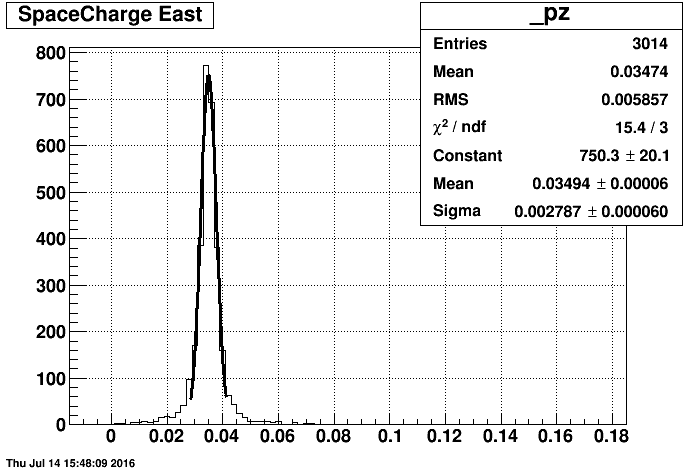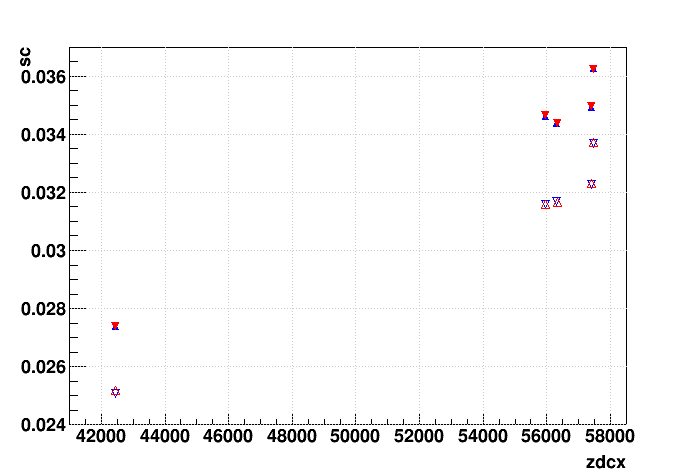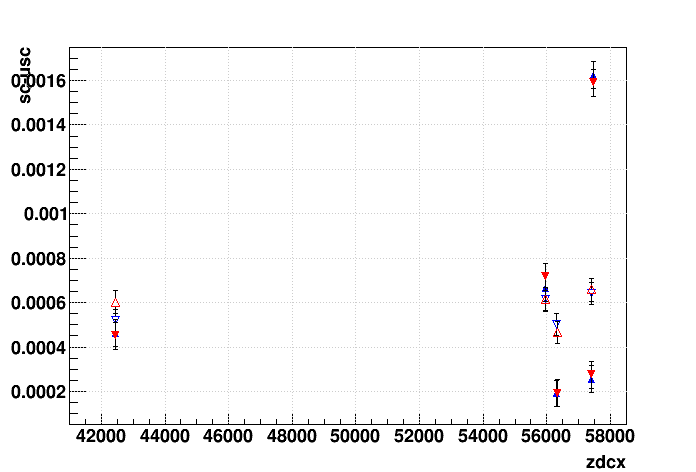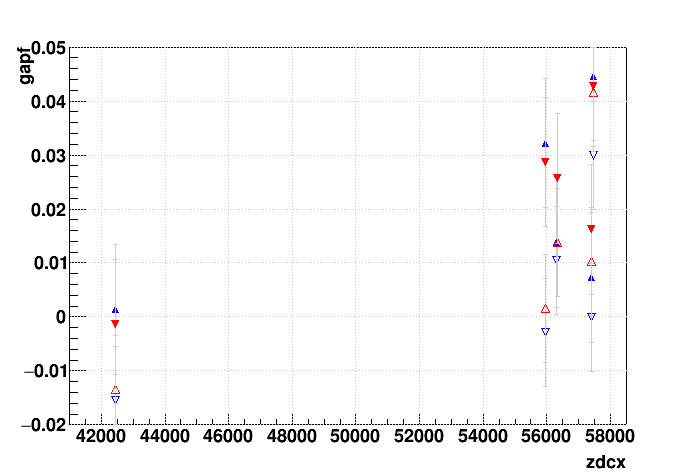- genevb's home page
- Posts
- 2024
- 2023
- 2022
- September (1)
- 2021
- 2020
- 2019
- 2018
- 2017
- December (1)
- October (3)
- September (1)
- August (1)
- July (2)
- June (2)
- April (2)
- March (2)
- February (1)
- 2016
- November (2)
- September (1)
- August (2)
- July (1)
- June (2)
- May (2)
- April (1)
- March (5)
- February (2)
- January (1)
- 2015
- December (1)
- October (1)
- September (2)
- June (1)
- May (2)
- April (2)
- March (3)
- February (1)
- January (3)
- 2014
- 2013
- 2012
- 2011
- January (3)
- 2010
- February (4)
- 2009
- 2008
- 2005
- October (1)
- My blog
- Post new blog entry
- All blogs
SpaceCharge and GridLeak: Sti vs. StiCA
Updated on Fri, 2016-07-15 12:22. Originally created by genevb on 2016-07-14 15:07.
Sti (blue) vs. StiCA (red) for the TPC SpaceCharge & GridLeak calibration
5 runs of Run 16 AuAu200 were processed for the calibration using both trackers (everything else identical between jobs) (detail: MINTRACKS=3000)
Example of fitting SpaceCharge in one run, using 3014 "good" tracks, fit error on the mean is 6e-5:

Using fits like the above, for the 5 different runs, two different trackers (Sti and StiCA), and east (closed symbols) and west (open symbols) TPC sepearately (HFT support materials presence causes more SpaceCharge on east), here are some comparions...
SpaceCharge ("sc") vs. luminosity:
On the large scale, the trackers give virtually identical results.

Remnant observed SpaceCharge: SpaceCharge - used SpaceCharge ("sc - usc") vs. luminosity:
Differences become more visible, but the direct differences between the trackers are well within the error on the measurements for all 10 data points (east/west * 5 runs) with no obvious systematics (e.g. not statistically above or below, or steeper or flatter, etc.), and there are other run-to-run variations which are unresolved by the calibration which are at a notably larger scale than any tracker differences.

GridLeak ("gapf") vs. luminosity:
As with sc-usc, this is the remnant GridLeak distortion after corrections (remaining distortion observed), with similar conclusions to those from sc-usc.

Conclusions:
-Gene
5 runs of Run 16 AuAu200 were processed for the calibration using both trackers (everything else identical between jobs) (detail: MINTRACKS=3000)
Example of fitting SpaceCharge in one run, using 3014 "good" tracks, fit error on the mean is 6e-5:

Using fits like the above, for the 5 different runs, two different trackers (Sti and StiCA), and east (closed symbols) and west (open symbols) TPC sepearately (HFT support materials presence causes more SpaceCharge on east), here are some comparions...
SpaceCharge ("sc") vs. luminosity:
On the large scale, the trackers give virtually identical results.

Remnant observed SpaceCharge: SpaceCharge - used SpaceCharge ("sc - usc") vs. luminosity:
Differences become more visible, but the direct differences between the trackers are well within the error on the measurements for all 10 data points (east/west * 5 runs) with no obvious systematics (e.g. not statistically above or below, or steeper or flatter, etc.), and there are other run-to-run variations which are unresolved by the calibration which are at a notably larger scale than any tracker differences.

GridLeak ("gapf") vs. luminosity:
As with sc-usc, this is the remnant GridLeak distortion after corrections (remaining distortion observed), with similar conclusions to those from sc-usc.

Conclusions:
- The impact of using the two different trackers on the TPC SpaceCharge & GridLeak calibration is at a level which can be considered negligible.
- Calibration jobs require fewer events (~5-15%) with StiCA because of the higher efficiency to reconstruct good tracks, resulting in jobs running ~2-12% faster.
-Gene
»
- genevb's blog
- Login or register to post comments
